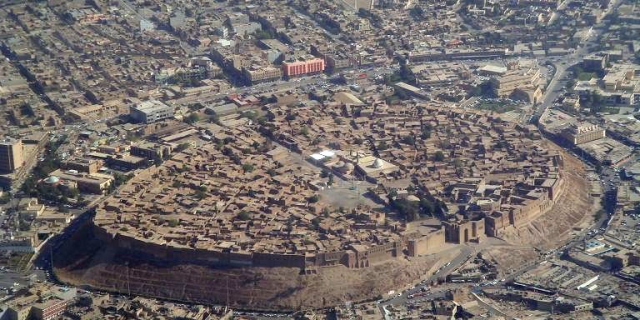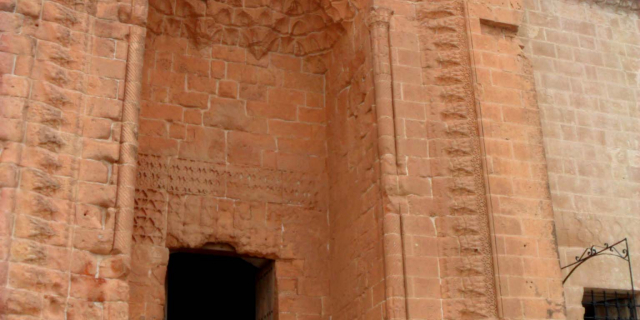Urfa, officially called Şanlıurfa (Turkish pronunciation: [ʃanˈɫɯuɾfa]), is a city in southeastern Turkey and the capital of Şanlıurfa Province. The city was known as Edessa from Hellenistic times and into Christian times. Urfa is situated on a plain about 80 km east of the Euphrates. Its climate features extremely hot, dry summers and cool, moist winters.
About 12 km (7 mi) northeast of the city is the famous Neolithic site of Göbekli Tepe, the world's oldest known temple, which was founded in the 10th millennium BC. The area was part of a network of the first human settlements where the agricultural revolution took place. Because of its association with Jewish, Christian, and Islamic history, and a legend according to which it was the hometown of Abraham, Urfa is nicknamed the "City of Prophets."
Religion is important in Urfa. The city "has become a center of fundamental...Read more
Urfa, officially called Şanlıurfa (Turkish pronunciation: [ʃanˈɫɯuɾfa]), is a city in southeastern Turkey and the capital of Şanlıurfa Province. The city was known as Edessa from Hellenistic times and into Christian times. Urfa is situated on a plain about 80 km east of the Euphrates. Its climate features extremely hot, dry summers and cool, moist winters.
About 12 km (7 mi) northeast of the city is the famous Neolithic site of Göbekli Tepe, the world's oldest known temple, which was founded in the 10th millennium BC. The area was part of a network of the first human settlements where the agricultural revolution took place. Because of its association with Jewish, Christian, and Islamic history, and a legend according to which it was the hometown of Abraham, Urfa is nicknamed the "City of Prophets."
Religion is important in Urfa. The city "has become a center of fundamentalist Islamic beliefs": 620 and "is considered one of the most devoutly religious cities in Turkey".
The city is located 30 miles from the Atatürk Dam, at the heart of the Southeast Anatolia Project, which draws thousands of job-seeking rural villagers to the city every year.
The ethnic and religious demographics of the city have shifted over the centuries and were largely diverse. In ancient times, the region was mixed with Greeks, Arabs, Syrians, and Armenians.[1] At the time of the First Crusade, the majority of the population were either Armenian or Assyrian.
There was an ancient Jewish community in Urfa, with about 1,000 people by the 19th century. Most of them emigrated in 1896, fleeing the Hamidian massacres, and settling mainly in Aleppo, Tiberias and Jerusalem.[2] In 1910, Ely Bannister Soane wrote that apart from Turkish effendis, Urfa was populated by Arabs, Kurds and a large number of Armenians.[3] British forces reported a mixed pre-war population of Kurds, Turks and 7,500 Armenians.[4] The Armenian Patriarchate of Constantinople reported 25,000 to 30,000 Armenians in Urfa and its environs, on an overall population of 60,000.[2] According to Agha Petros, there were 7,200 Syriacs in the city of Urfa, and 8,000 in ten surrounding villages.[2] Joseph Tfinkdji reports 200 Chaldeans.[2] According to 1918 reports of the Urfa mutasarrifate, there were 33,000 Turks, 27,000 Kurds, 12,000 Arabs, 5,500 Armenians, 3,000 Assyrians, and 500 Jews in the central kaza.[5]
The Armenian and Assyrian Genocides, undertaken by Ottoman troops and Ottoman-sponsored militias such as the special organization,[6] led to the slaughter, deportation,[4] and ethnic cleansing of much of the Christian population of Urfa and the surrounding region. Following the establishment of the Republic of Turkey, most of the remaining non-Muslim population left the city due to continued persecution.[7]
LanguageIn the early 19th century, the dominant language of the city was Turkish,[8] while Armenian, Syriac, Kurdish, Arabic, and Persian were also spoken. Armenians were observed to speak Turkish to strangers, while Assyrians spoke Arabic.[1]





























Add new comment